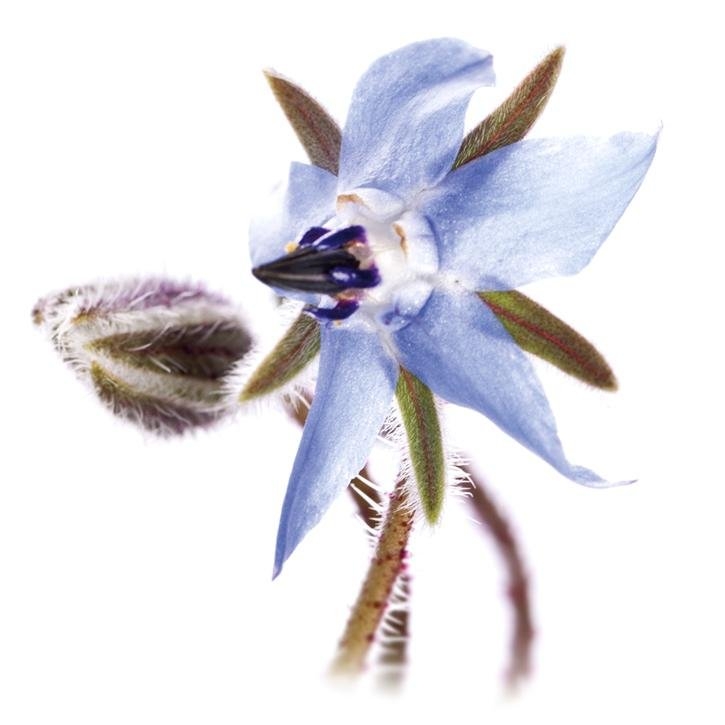Description
It’s an annual, covered with prickly herb that grows 15-60 cm high. Its stem is wide and very branched, erect, hollow, striated, covered with whitish coarse hair with a broad and long root. Leaves are alternate, rugose, long, rough, wide and narrow towards the branch apex (basal leaves are large, petiolate, oval-shaped and the upper ones are smaller, alternate, sessile and lanceolate), from elliptic to alternate, from 3 to 10 cm, entire, curved and downy, dark green on top and white on the back. Flowers are star-shaped in terminal racemes, turned toward the apex. They have 5 pilose sepals, 5 light blue petals, some times they are white. It has 5 stamens with dark purple anthers. Tetrachaenium fruits are hard and rugose, brown or dark gray, with four nutlets. It belongs to the Boraginaceae (Boragaceae) family.
It is believed to be native of the Iberian-Morocco region. It’s cultivated in ordinary soil, on rubbish heaps and near dwellings, and may be regarded as a garden escape. It blooms at the beginning of spring, even in warm zones and high inland soil. Leaves must be harvested in spring when unripe and flowers should be cut one by one, in summer, when are completely open.
Part used
The whole plant (flowers and leaves) and the oil extracted from the seeds.
Indications
*Flowers and leaves
- Respiratory tract: bronchitis, pharyngitis, irritating coughing, common cold, flu, etc.
- Genitourinary disorders: cystitis, urethritis, uretheritis, nephritis, oliguria or urolithiasis.
- Edemas, hyperazotemia, overweight with water retention.
- Rheumatism, hyperuricemia, gout.
- Arterial hypertension.
- Rash and fever illnesses (measles, chicken pox, scarlet fever).
- Pre-menstrual syndrome, menopause.
- External use: wounds, dermatitis, eczemas, gout pain.
*Oil
- Menstrual disorders: dysmenorrhea, pre-menstrual syndrome, menopause.
- Hypercholesterolemic, prevention of the atherosclerosis.
- Cardiovascular disorders prevention, such as hypertension, heart attack (myocardial), stroke or cerebralvascular accident, etc.
- Self-immune diseases: multiple sclerosis, rheumatoid arthritis, etc.
- Skin good conditions, atopic eczema, seborrheic dermatitis, psoriasis, dryness and skin aging.
- External use: seborrheic dermatitis, ichthyosis, psoriasis, dryness and skin aging.
Bibliography
Berdonces i Serra, J. Ll. (2001) Gran Enciclopedia de las Plantas Medicinales. Tikal. Madrid
Bruneton, J. (2001) Farmacognosia. Fitoquímica. Plantas medicinales. 2ª Edición. Acribia, S.A. Zaragoza
Cañigueral, S., Vila R., Wichtl M. (1998) Plantas medicinales y drogas vegetales para infusión y tisana. OEMF International. Barcelona
Chevallier, A. (1997) Enciclopedia de las Plantas Medicinales. Acento. Madrid
Lastra, J.J., Bachiller L.I. (1997) Plantas medicinales en Asturias y la Cornisa Cantábrica. Trea. Gijón (Asturias)
Vanaclocha B., Cañigueral S. (eds.) (2003) Fitoterapia, Vademécum de Prescripción. Masson. Barcelona.
